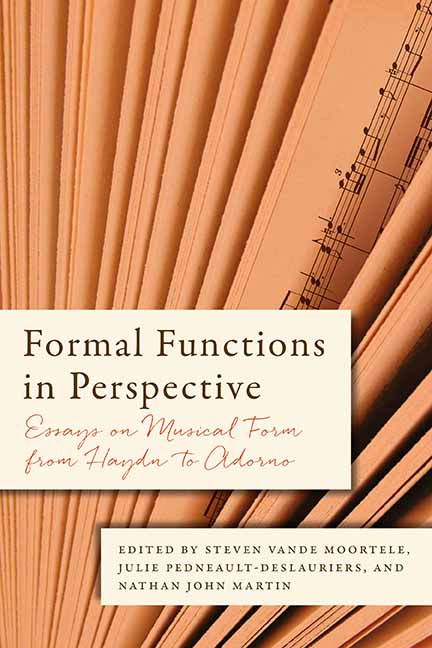Book contents
Introduction
Published online by Cambridge University Press: 26 May 2021
Summary
Few writers have contributed as much to the revival of Formenlehre in current English-language music theory as William E. Caplin. From his early articles on the eight-measure sentence (1986) and the expanded cadential progression (1987) through to his current work on cadence typologies, Caplin has consistently challenged the field to reengage with the conceptual resources of German Formenlehre. The vocabularies introduced, reintroduced, reconfigured, and refined in his writings—above all in his 1998 treatise Classical Form: A Theory of Formal Functions for the Instrumental Music of Haydn, Mozart, and Beethoven—have become an indispensable part of every working music theorist's conceptual armature. The essays in this volume engage with Caplin's theorizing in multiple ways and from diverse perspectives, testifying both to its centrality and to its fecundity: it is difficult to imagine contemporary music theorists writing seriously about musical form without orienting themselves, in one way or another, toward the framework that Caplin has elaborated.
The central preoccupation of Caplin's scholarship has unquestionably been the formal processes on display in the musical monuments of high Viennese classicism, that is, in the later instrumental music of Haydn and Mozart and in the earlier works of Beethoven. Despite the eventual centrality of this repertoire to Caplin's career, his path to it was indirect: a dissertation project on theories of musical rhythm, undertaken at the University of Chicago under the direction of Philip Gossett, led him to Carl Dahlhaus at the Technische Universität Berlin from the fall of 1976 through the summer of 1978. Though in Berlin ostensibly to study the history of music theory, Caplin discovered something else: for his defining encounter with the Schoenberg–Ratz line— an encounter whose influence on Caplin's work is measured not least in the central category of “formal function”—was mediated by Dahlhaus. Having decamped to Montreal in the fall of 1978, Caplin began giving regular courses on classical form, first to undergraduates and later to graduate students. What began as an external imposition developed first into a research project and then into a scholarly career. By the later 1980s, various drafts of what eventually became Classical Form were in circulation as teaching texts, and certain characteristic features of these pedagogical origins were carried over into the published treatise: the gradual, systematic exposition of theoretical concepts, the modesty of the authorial voice, the pellucid prose.
Information
- Type
- Chapter
- Information
- Formal Functions in PerspectiveEssays on Musical Form from Haydn to Adorno, pp. 1 - 8Publisher: Boydell & BrewerPrint publication year: 2015
